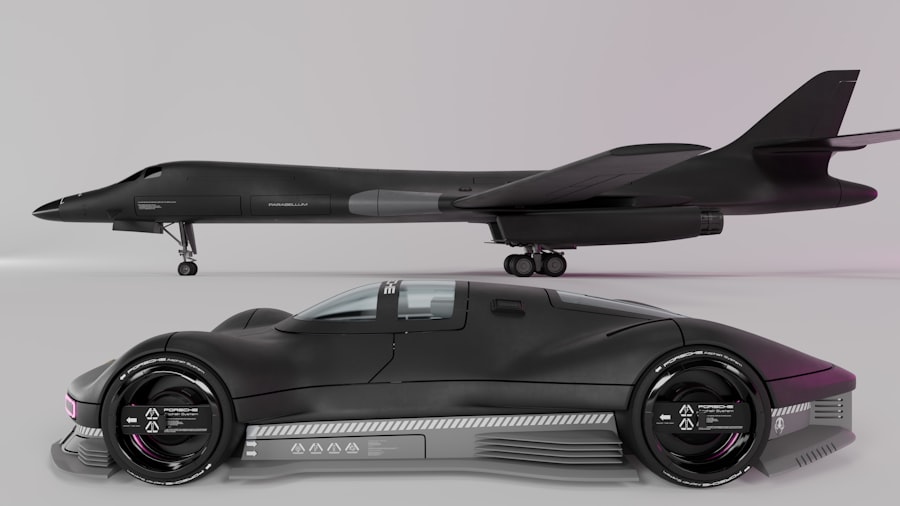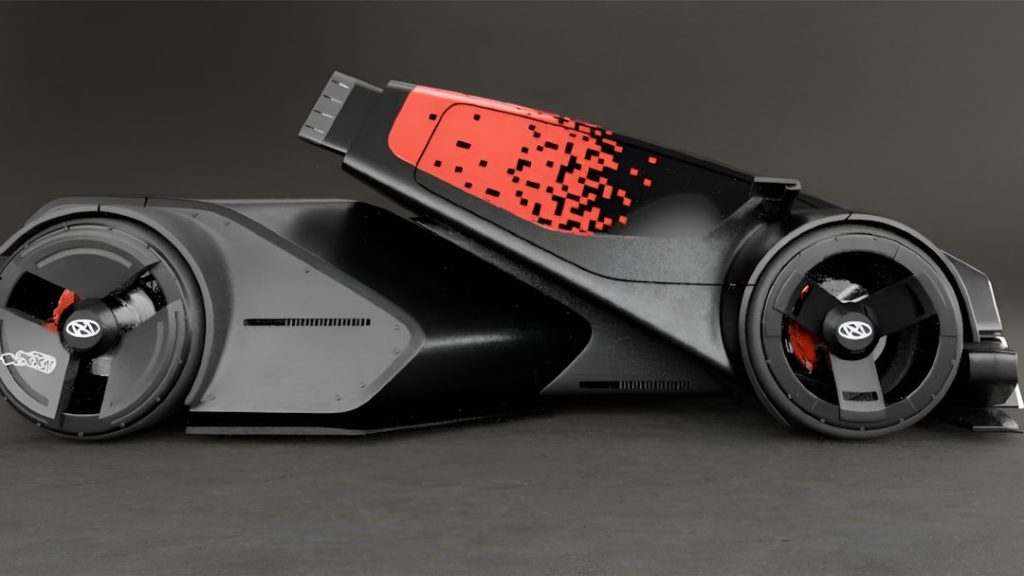Aerodynamic engineering is a specialized field that focuses on the behavior of air as it interacts with solid objects, particularly those that move through the atmosphere. This discipline is crucial in various industries, including aerospace, automotive, and civil engineering, where understanding airflow can lead to significant improvements in efficiency, performance, and safety. The study of aerodynamics encompasses a wide range of phenomena, from the basic principles of fluid dynamics to complex computational simulations that predict how air will behave around different shapes and structures.
As technology advances, the importance of aerodynamic engineering continues to grow, influencing everything from the design of high-speed trains to the development of energy-efficient buildings. The roots of aerodynamic engineering can be traced back to the early days of flight, when pioneers like the Wright brothers began experimenting with wing shapes and control surfaces. Over the years, this field has evolved dramatically, driven by advancements in materials science, computational fluid dynamics (CFD), and wind tunnel testing.
Today, aerodynamic engineers employ sophisticated modeling techniques and simulations to optimize designs for various applications. The integration of aerodynamics into engineering practices not only enhances performance but also contributes to sustainability efforts by reducing energy consumption and emissions across multiple sectors.
Key Takeaways
- Aerodynamic engineering is the study of how air moves around objects and the forces that it generates.
- The principles of aerodynamics involve understanding airflow, drag, lift, and the impact of shape and surface on an object’s performance.
- Aerodynamic engineering plays a crucial role in industries such as automotive, aerospace, sports, and renewable energy.
- In automotive engineering, aerodynamic design is essential for improving fuel efficiency, stability, and overall performance of vehicles.
- Aerodynamics significantly impacts aircraft design and performance, influencing factors such as fuel efficiency, speed, and maneuverability.
The Principles of Aerodynamics
At its core, aerodynamics is governed by several fundamental principles that describe how air behaves when it encounters an object. One of the most critical concepts is Bernoulli’s principle, which states that an increase in the speed of a fluid occurs simultaneously with a decrease in pressure. This principle is essential for understanding lift generation in aircraft wings, where the shape of the wing creates differences in airspeed above and below its surface, resulting in lift.
Additionally, the concept of drag—resistance experienced by an object moving through air—plays a vital role in aerodynamic design. Drag can be classified into two main types: parasitic drag, which includes form drag and skin friction drag, and induced drag, which is associated with the generation of lift. Another key principle is Newton’s third law of motion, which states that for every action, there is an equal and opposite reaction.
This principle is particularly relevant in the context of propulsion systems, where engines generate thrust by expelling air or exhaust gases backward, propelling the vehicle forward. Understanding these principles allows engineers to manipulate airflow around objects to achieve desired outcomes, such as maximizing lift while minimizing drag. The interplay between these forces is complex and requires a deep understanding of fluid dynamics to optimize designs effectively.
The Role of Aerodynamic Engineering in Different Industries

Aerodynamic engineering plays a pivotal role across various industries, each with its unique challenges and requirements. In aerospace engineering, for instance, the design of aircraft wings and fuselages relies heavily on aerodynamic principles to ensure efficient flight. Engineers must consider factors such as weight distribution, material selection, and environmental conditions to create aircraft that can withstand the rigors of flight while maintaining fuel efficiency.
The aerospace sector has seen significant advancements due to aerodynamic innovations, leading to the development of supersonic jets and more fuel-efficient commercial airliners. In the automotive industry, aerodynamic engineering is equally crucial. As vehicles become faster and more efficient, manufacturers are increasingly focused on reducing drag to improve fuel economy and performance.
The design of modern cars often incorporates features such as streamlined shapes, active aerodynamics (which adjust based on speed), and underbody panels that smooth airflow beneath the vehicle. For example, manufacturers like Tesla have invested heavily in aerodynamic research to enhance the performance of their electric vehicles, resulting in models that can travel longer distances on a single charge due to reduced air resistance.
The Importance of Aerodynamic Design in Automotive Engineering
| Aspect | Importance |
|---|---|
| Reduced Drag | Improves fuel efficiency and reduces wind noise |
| Enhanced Stability | Improves handling and reduces the risk of accidents |
| Improved Performance | Increases speed and acceleration |
| Reduced Lift | Prevents the car from lifting at high speeds |
| Reduced Turbulence | Enhances comfort for passengers and reduces wind resistance |
The significance of aerodynamic design in automotive engineering cannot be overstated. As fuel efficiency regulations become stricter worldwide, car manufacturers are compelled to innovate continuously to meet these standards while still delivering high-performance vehicles. Aerodynamics directly influences a vehicle’s fuel consumption; even minor improvements in drag coefficient can lead to substantial savings over time.
For instance, the introduction of features like rear spoilers and diffusers has been shown to reduce drag significantly while enhancing stability at high speeds. Moreover, aerodynamic design also impacts vehicle handling and safety. A well-designed car can maintain better traction and stability during cornering due to optimized airflow around its body.
This is particularly important for high-performance sports cars that require precise handling characteristics. Manufacturers often utilize wind tunnel testing and CFD simulations to refine their designs before production. The integration of advanced materials and manufacturing techniques further allows for more intricate shapes that enhance aerodynamic performance without compromising structural integrity.
The Impact of Aerodynamics on Aircraft Design and Performance
In aviation, aerodynamics is paramount for ensuring that aircraft can achieve flight efficiently and safely. The design process begins with understanding how different wing shapes affect lift generation and drag reduction. For example, high-aspect-ratio wings are favored for gliders due to their ability to generate lift with minimal drag, while short takeoff and landing (STOL) aircraft may utilize thicker wings with leading-edge devices to enhance performance at lower speeds.
The impact of aerodynamics extends beyond just wing design; it also influences overall aircraft performance metrics such as range, speed, and fuel efficiency. Modern commercial jets are designed with sleek fuselages that minimize drag during cruise flight, allowing them to cover long distances with less fuel consumption. Innovations such as winglets—small vertical extensions at the tips of wings—have been implemented to reduce vortex drag caused by wingtip vortices.
These advancements not only improve operational efficiency but also contribute to lower emissions, aligning with global sustainability goals.
Advancements in Aerodynamic Engineering Technology

The field of aerodynamic engineering has witnessed remarkable advancements over recent decades, largely driven by technological innovations. Computational fluid dynamics (CFD) has revolutionized how engineers analyze airflow around objects. By simulating complex fluid interactions on powerful computers, engineers can visualize airflow patterns and identify potential issues before physical prototypes are built.
This capability significantly reduces development time and costs while allowing for more intricate designs that were previously impossible to test. Additionally, advancements in materials science have led to the creation of lighter and stronger materials that can withstand aerodynamic forces without adding unnecessary weight. Composite materials are increasingly used in both aerospace and automotive applications due to their favorable strength-to-weight ratios.
Furthermore, 3D printing technology has enabled rapid prototyping of aerodynamic components, allowing engineers to iterate designs quickly based on real-world testing results. These technological advancements continue to push the boundaries of what is possible in aerodynamic engineering.
The Future of Aerodynamic Engineering
Looking ahead, the future of aerodynamic engineering appears promising as new challenges emerge alongside technological advancements. One significant area of focus is the development of sustainable transportation solutions that minimize environmental impact. As electric vehicles gain popularity, engineers are tasked with optimizing their designs for maximum efficiency while considering factors such as battery placement and weight distribution.
Aerodynamic innovations will play a crucial role in ensuring these vehicles can achieve long ranges without compromising performance. Moreover, the rise of urban air mobility (UAM) presents exciting opportunities for aerodynamic engineers. As cities explore options for aerial taxis and drones for cargo delivery, understanding how these vehicles interact with urban environments becomes essential.
Engineers will need to consider not only traditional aerodynamic principles but also how buildings and other structures influence airflow patterns in densely populated areas. This interdisciplinary approach will require collaboration between aerodynamicists, urban planners, and regulatory bodies to create safe and efficient aerial transportation systems.
The Continued Evolution of Aerodynamic Engineering
Aerodynamic engineering stands at the intersection of innovation and necessity across multiple industries. As we continue to face challenges related to energy consumption and environmental sustainability, the role of aerodynamics will only become more critical. From enhancing vehicle performance to developing new modes of transportation, aerodynamic engineers are tasked with pushing the boundaries of what is possible while adhering to increasingly stringent regulations.
The evolution of this field will undoubtedly be shaped by ongoing research and technological advancements that enable more efficient designs and sustainable practices. As we look toward the future, it is clear that aerodynamic engineering will remain a vital component in shaping our world—whether through improved aircraft designs that reduce emissions or innovative automotive solutions that redefine efficiency standards. The journey ahead promises exciting developments that will continue to transform our understanding of airflow and its implications across various sectors.


